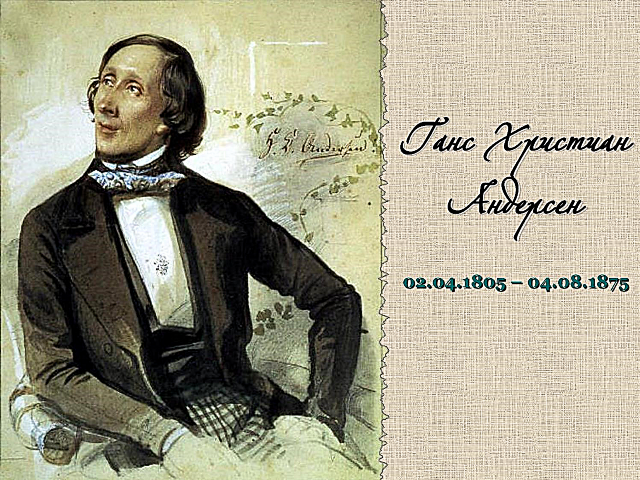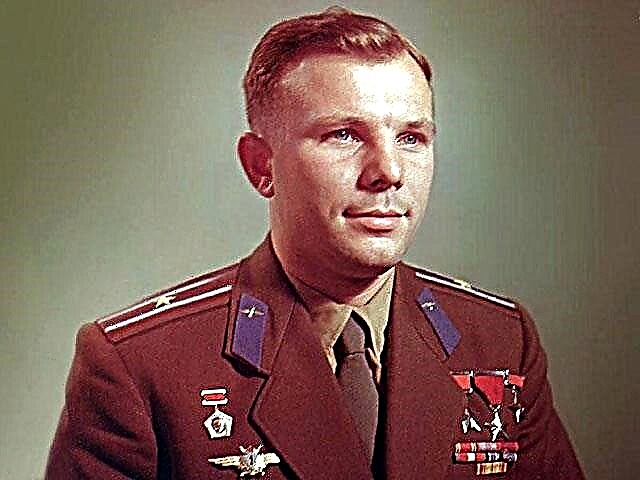The Caucasus is located at the junction of Europe and Asia between the Caspian and Black Seas. The combination of geographic, climatic, physical and ethnic characteristics makes this region unique. The Caucasus is a whole world, diverse and unique.
Regions with richer history, more beautiful landscapes, or pleasant climates can be found on Earth. But only in the Caucasus, nature and people form a unique mixture that allows any guest to find their zest.
If we talk about the population of the Caucasus, then in no case should the term “Caucasian” be used as an ethnic characteristic. Dozens of peoples live in the Caucasus, some of them differ from others like heaven and earth. There are Muslim and Christian peoples. There are people who live in the mountains and are engaged in traditional viticulture and sheep breeding, and there are people living in modern megacities. Even residents of two neighboring valleys may not understand the language of their neighbors and take pride in the fact that they represent a small but mountainous people.
After the collapse of the USSR and the conflicts that followed it, the Caucasus, unfortunately, is associated with war and terrorism by many. The reasons for the conflicts have not gone anywhere. Neither land has grown, nor minerals, and ethnic differences have not disappeared. Nevertheless, by the end of the second decade of the 21st century, the elites managed to stabilize the situation both in the North Caucasus and in the newly independent Transcaucasian states.
Talking about the Caucasus, due to its stunning diversity, can be infinitely long. Every nation, every settlement, every piece of mountains is unique and inimitable. And a lot of interesting things can be told about everything.

1. There are so many countries and autonomous republics in the Caucasus in Russia that they all seem tiny. Sometimes this is true - when traveling from Grozny to Pyatigorsk, you cross four administrative boundaries. On the other hand, a trip from the south of Dagestan to the north of the republic in terms of distance is comparable to a trip from Moscow to St. Petersburg. Everything is relative - Dagestan surpasses Holland and Switzerland in area, and even the Chechen Republic, which is really small by Russian standards, is seven times larger than Luxembourg. But in general, of course, if you rank the Russian regions by territory, then the Caucasian republics will be at the very end of the list. Smaller than Ingushetia, North Ossetia, Karachay-Cherkessia, Kabardino-Balkaria and Chechnya, only the regions - the cities of Sevastopol, St. Petersburg and Moscow, and even the Kaliningrad region wedged in between Karachay-Cherkessia and Chechnya. The Stavropol Territory and Dagestan look giants against their background - 45th and 52nd places respectively in the federal list.
2. Georgians, Armenians and Udins (the people living on the territory of Dagestan) adopted Christianity as a state religion in the IV century. Greater Armenia in 301 became the first Christian state in the world, 12 years ahead of the Roman Empire. Ossetia was baptized 70 years earlier than Kievan Rus. At present, Christians prevail among the population in the Caucasus as a whole. In the North Caucasus Federal District of Russia, there are 57% of them, and Georgia and Armenia are predominantly Christian countries with minor interspersed with representatives of other religions.
3. In the Soviet Union, the word combinations "Georgian tea" and "Georgian tangerines" were so common that the society formed the opinion that these were the eternal Georgian products. In fact, until the 1930s, both tea and citrus fruits were grown in Georgia on a meager scale. Mass planting of a tea bush and citrus trees began on the initiative of the then First Secretary of the Central Committee of the Communist Party (Bolsheviks) of Georgia Lavrenty Beria. Moreover, the work was colossal - the subtropical zone in what was then Georgia was a very narrow strip near the sea, smoothly turning into malaria swamps. Hundreds of thousands of hectares were drained. Something similar, only with the clearing of stones, was done on the mountain slopes, where tea was planted. Products exotic for the rest of the USSR provided the population of Georgia with a high standard of living. After the collapse of the Soviet Union and the loss of the Russian market, tea and citrus production in Georgia declined sharply.
4. The North Caucasus is the birthplace of kefir. Despite the fact that the Ossetians, Balkars and Karachais (of course, challenging their priority) have been drinking kefir for centuries, in the European part of Russia they learned about it only in the second half of the 19th century. Studies have shown that kefir was made by accidentally or deliberately adding kumis enzyme to cow's milk. Kumis enzyme has become kefir, and now kefir is produced in hundreds of thousands of liters.
5. In North Ossetia, 40 kilometers south-west of Vladikavkaz, there is a unique village Dargavs, which the locals themselves call the City of the Dead. For hundreds of years, the dead were not buried here, but were placed in stone towers up to four stories high. Thanks to the mountain air and relatively low temperatures, the bodies were quickly mummified and kept intact. During the plague epidemic in the XIV century, when most of the inhabitants of the aul died out, entire families at the first symptoms of the disease immediately went to the crypt towers. Other historical monuments have been preserved in Dargavs, in particular, the towers in which the ancestors of the oldest and most respected families of Ossetia lived. However, access to these monuments is difficult - after the glacier disappeared in 2002, one can get to Dargavs only on foot along a dangerous path.
6. The highest mountain in the Caucasus and, concurrently, the highest mountain in Europe, is Elbrus (height 5,642 meters). It is believed that the first ascent of Elbrus in 1828 was made by the guide of the Russian expedition, Kilar Khashirov, who was rewarded for his achievement with 100 rubles and a cut of cloth. However, Khashirov visited the Eastern summit of the two-headed mountain, which is lower than the Western one. The expedition organized by the president of the London Alpine Club Florence Grove was the first to reach the highest point in Europe. This happened in 1874. The following year, Grove, impressed by the beauty of the Caucasus, published a book about his expedition.

7. The custom of blood feud still exists in the Caucasus. Perhaps it is precisely because of this barbaric relic that the number of premeditated murders in terms of population size from the North Caucasian Federal District firmly remains in last place in Russia. However, local law enforcement officials admit that blood feud still exists. According to their estimates, the murders of bloodlines make up a fraction of the total number of murders. Ethnologists note that the customs of blood feud has softened significantly. Now, when it comes to death through negligence, for example, in an accident, the elders can reconcile the parties by imposing a repentance procedure and a large financial fine.
8. "Bride kidnapping is an ancient and beautiful custom!" - said the hero of the film "Prisoner of the Caucasus". This custom remains relevant today. Of course, he never meant (and, moreover, does not mean now) the violent imprisonment of a girl and an equally violent marriage. In ancient times, the groom had to show his dexterity and decisiveness, quietly snatching his beloved from his father's house (and there are five brothers-horsemen watching). For the bride's parents, kidnapping could be a worthy way out of the situation if the groom could not pay the ransom-kalym due. Another option is to marry the youngest daughter before the older one, who, as they say in Russia, has sat up in girls. The abduction could also have occurred at the will of the girl, whom her parents did not allow to marry her beloved. Roughly the same reasons are caused by bride kidnapping now. Of course, excesses have and do happen. But for those who want to deprive a person of liberty, even a loved one, there is a special article of the criminal code. And in case of harm to the kidnapped, the criminal punishment for the guilty person can only become a delay in blood revenge.
9. The well-known Caucasian hospitality can, logically, be explained by the fact that in the old days the movement in the mountains was very difficult. Every guest, wherever he came from and whoever he was, was a valuable source of information about the outside world. So the custom arose to receive any guest with the maximum hospitality. But in Russia, for example, back in the 17th century there was a custom of greeting a guest. The owner met the guest at the entrance to the house, and the hostess served him a cup of drink. A custom that requires neither preparation nor expense. But he seemed to evaporate, remaining only in books. And the Caucasian peoples have retained their custom of hospitality, despite the modernization of society.
10. As you know, in late April - early May 1945 over the Reichstag building in Berlin, Soviet soldiers planted several dozen red flags. In both of the most famous cases of the installation of the Victory flags, the natives of the Caucasus were directly involved. On May 1, Mikhail Berest and the Georgian Meliton Kantaria erected the assault flag of the 150th Order of Kutuzov II degree of the Idritsa Division over the Reichstag. And one of the main characters of the canonical staged photo "The Red Banner over the Reichstag", taken on May 2, 1945, is a native of Dagestan Abdulkhalim Ismailov. In the picture of Evgeny Khaldei, Alexei Kovalyov is hoisting the banner, and Ismailov is supporting him. Before publishing the photograph, Khaldey had to retouch the second watch on Ismailov's hand.
11. After the collapse of the Soviet Union, the number of Russians sharply decreased not only in the newly independent states of Georgia, Azerbaijan and Armenia, but also in the Russian autonomous republics. Even if we take out of the brackets Chechnya, which has passed through a decade and a half of anarchy and two wars. In Dagestan, out of 165,000 Russians, just over 100,000 remained, with a significant overall population growth. In small Ingushetia, there are almost half the number of Russians. The share of the Russian population decreased against the background of a general increase in the number in Kabardino-Balkaria, Karachay-Cherkessia and North Ossetia (here to the least extent). In the Transcaucasian states, the number of Russians has decreased several times: four times in Armenia, three times in Azerbaijan and 13 (!) Times in Georgia.
12. Although the North Caucasian Federal District is only 7th among 9 Russian federal districts in terms of population, it stands out for its density. According to this indicator, the North Caucasian District is only slightly inferior to the Central District, which includes the huge Moscow. In the Central District, the population density is 60 people per km2, and in the North Caucasus - 54 people per km2... The picture is similar in the regions. Ingushetia, Chechnya and North Ossetia - Alania are ranked from 5 to 7 in the ranking of regions, behind only Moscow, St. Petersburg, Sevastopol and the Moscow region. Kabardino-Balkaria is in 10th position, and Dagestan is in 13th.

13. Armenia is hardly the homeland of apricot, but sweet fruits came to Europe from this Transcaucasian country. According to the international classification, the apricot is called Prunus armeniaca Lin. In the Caucasus, this fruit is treated quite scornfully - the tree is very unpretentious, it grows anywhere, and always bears fruit abundantly. The processed products are more or less valued: dried apricots, apricots, alani, candied fruits and marzipans.
14. Ossetians were the most heroic people of the Soviet Union during the Great Patriotic War. 33 representatives of this Caucasian people were awarded the title of Hero of the Soviet Union. The figure seems small, but taking into account the general small number of people, it means that out of every 11,000 Ossetians, including the elderly, women and children, one Hero of the Soviet Union emerged. The Kabardians have one hero for every 23,500 people, while the Armenians and Georgians have about the same figure. Azerbaijanis have it twice as much.
15. In Abkhazia and some other regions of Transcaucasia, many people expect Wednesday with bated breath. It is on Wednesday that invitations to various celebrations are sent out. The one who received the invitation is completely free to choose whether to go to the celebration or not. But in any case, he is obliged to send money “for a gift”. The rate is set in accordance with the current moment. For example, for a wedding you need to give 5,000 rubles with an average salary of 10-15,000.
16. Creating a family among small Caucasian peoples does not always resemble a long, but very intricate quest. It is necessary at the same time to avoid a closely related marriage, fraught with genetic abnormalities, and not to admit strangers into the genus. The problem is solved in different ways. In Abkhazia, after meeting, young people exchange lists of the names of 5 grandmothers. At least one surname coincided - the relationship ends before it begins. In Ingushetia, relatives from both sides are actively involved in the preparation of marriage. The pedigree of the future partner is carefully worked out, the potential bride's physical ability to bear and give birth to a child and at the same time to run a household is assessed.
17. Outside of Armenia, Armenians live the same number of Jews outside Israel - about 8 million people. At the same time, the population of Armenia itself is 3 million people. A very characteristic feature of Armenians stems from the size of the diaspora. Any of them, within a few minutes, is able to prove that this or that person has, at least, distant Armenian roots. If a Russian person, hearing a phrase like "Russia is the homeland of elephants!" if he smiles understandingly, then a similar postulate about Armenia will be quickly confirmed (according to the Armenian) with the help of small logical research.
18. The generally recognized antiquity of the Caucasian peoples still has its own gradations. In Georgia, for example, they are very proud that the Argonauts sailed for their fleece to Colchis, located on the territory of modern Georgia. Georgians also like to emphasize that their people, however, allegorically, are mentioned in the Bible itself. At the same time, it is archaeologically proven that people lived on the territory of Dagestan 2.2 million years ago. In some of the studied Dagestan camps of ancient people, fire in one place was maintained for centuries until people learned how to get it on their own.
19. Azerbaijan is a unique country in terms of climate. If conditional aliens were going to explore the climatic features of the Earth, they could do with Azerbaijan. There are 9 out of 11 climatic zones in the country. The average July temperature ranges from + 28 ° C to -1 ° C, and the average January temperature ranges from + 5 ° C to -22 ° C. But the average annual air temperature in this Transcaucasian country exactly repeats the average temperature on the globe and is + 14.2 ° C.
20. The real Armenian cognac is undoubtedly one of the best alcoholic beverages produced in the world. However, the numerous stories about how celebrities loved Armenian brandy are mostly fiction. The most widespread story is that the day of the repeated British Prime Minister Winston Churchill was not complete without a bottle of 10-year old Armenian brandy “Dvin”. Cognac, on Stalin's personal order, was transported to him from Armenia by special planes. Moreover, a year before his death, 89-year-old Churchill allegedly named Armenian cognac as one of the reasons for his longevity. And when Markar Sedrakyan, who was in charge of the production of Armenian cognacs, was repressed, Churchill immediately felt a change in taste. After his complaint to Stalin, the masters of cognac were released, and his excellent taste returned to “Dvin”. In fact, Sadrakyan was "repressed" to Odessa for one year to establish the production of cognac.Stalin really treated the partners in the Anti-Hitler coalition with Armenian cognac, but did not supply them to their deaths. And Churchill's favorite drink, based on his memoirs, was the Hine brandy.









